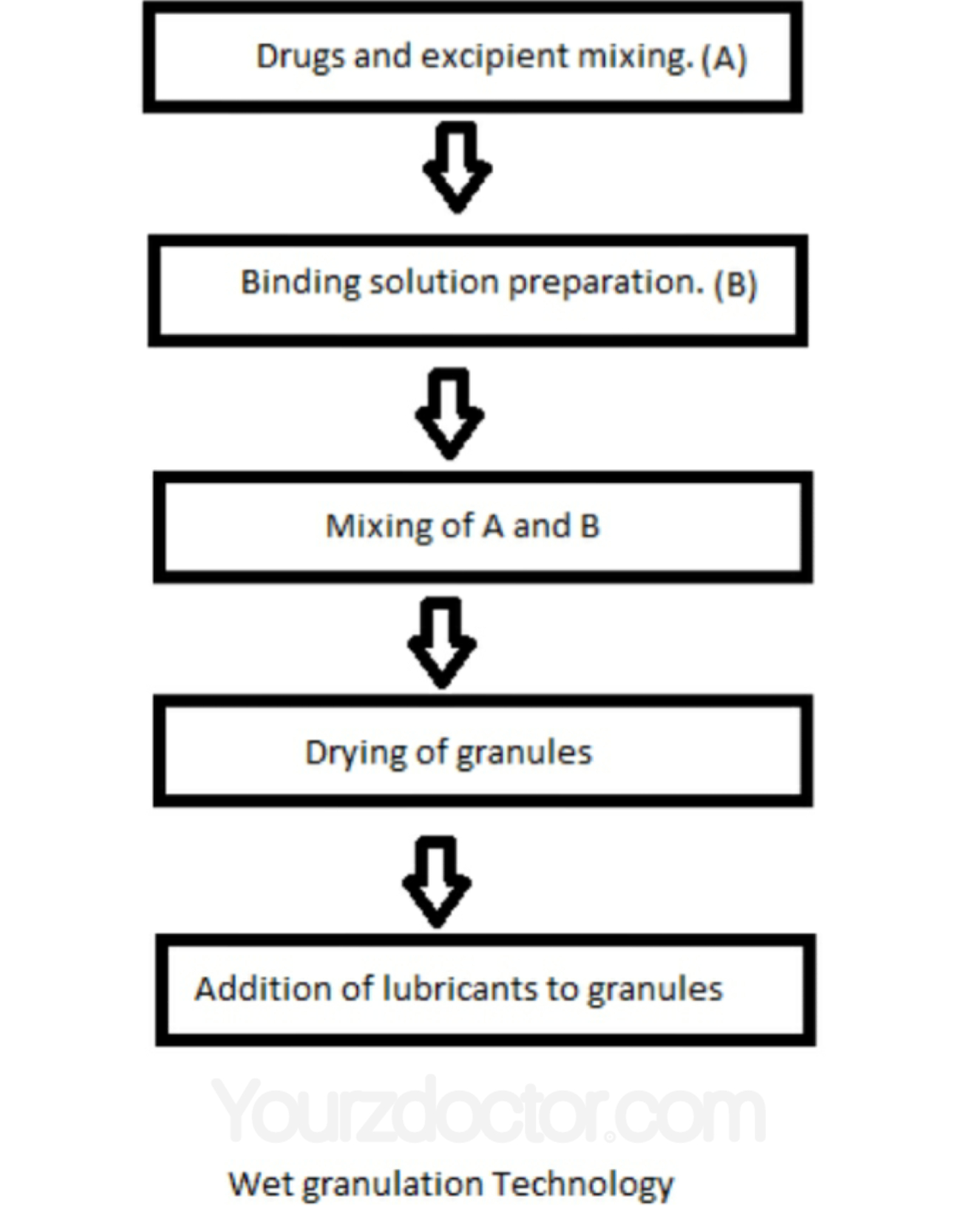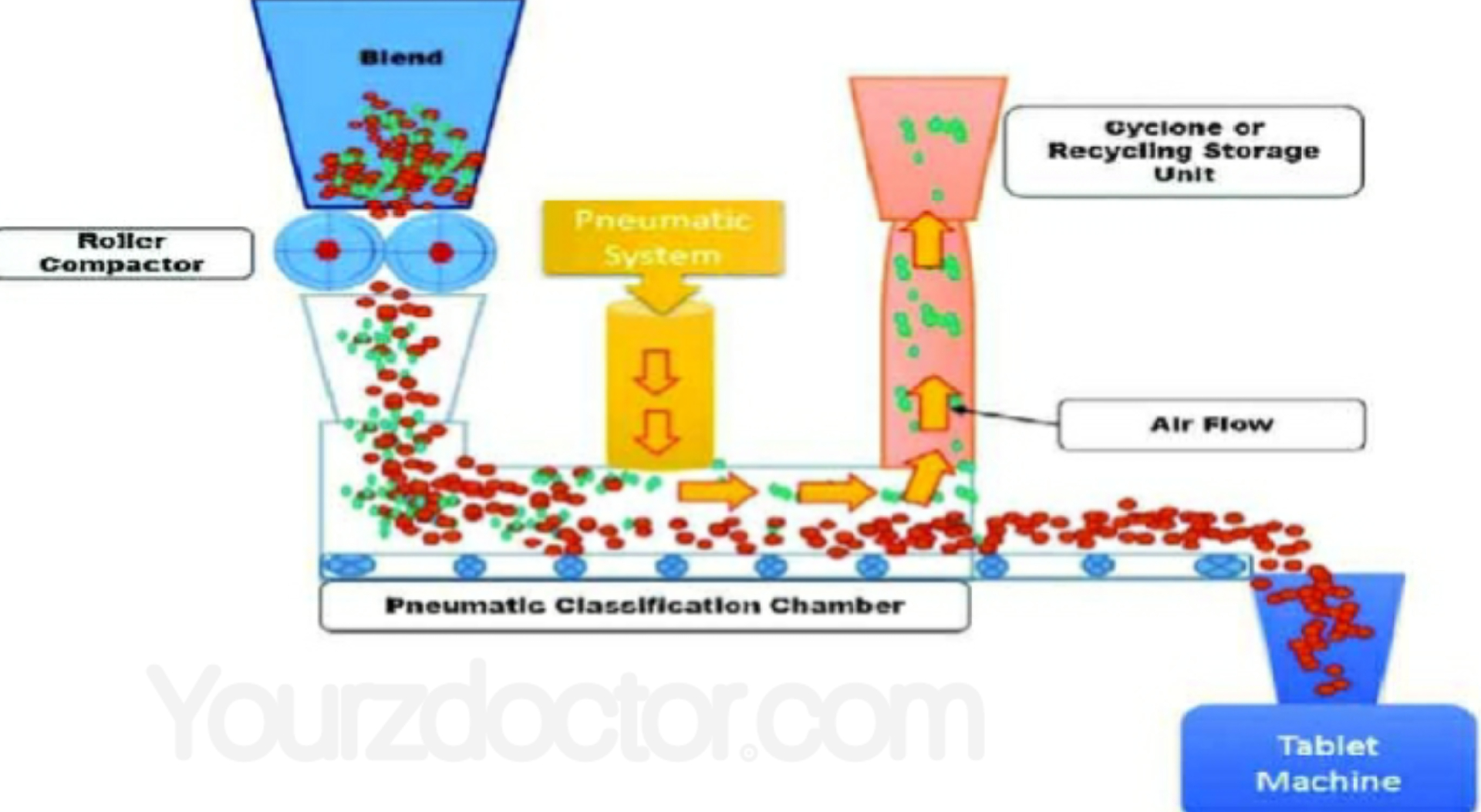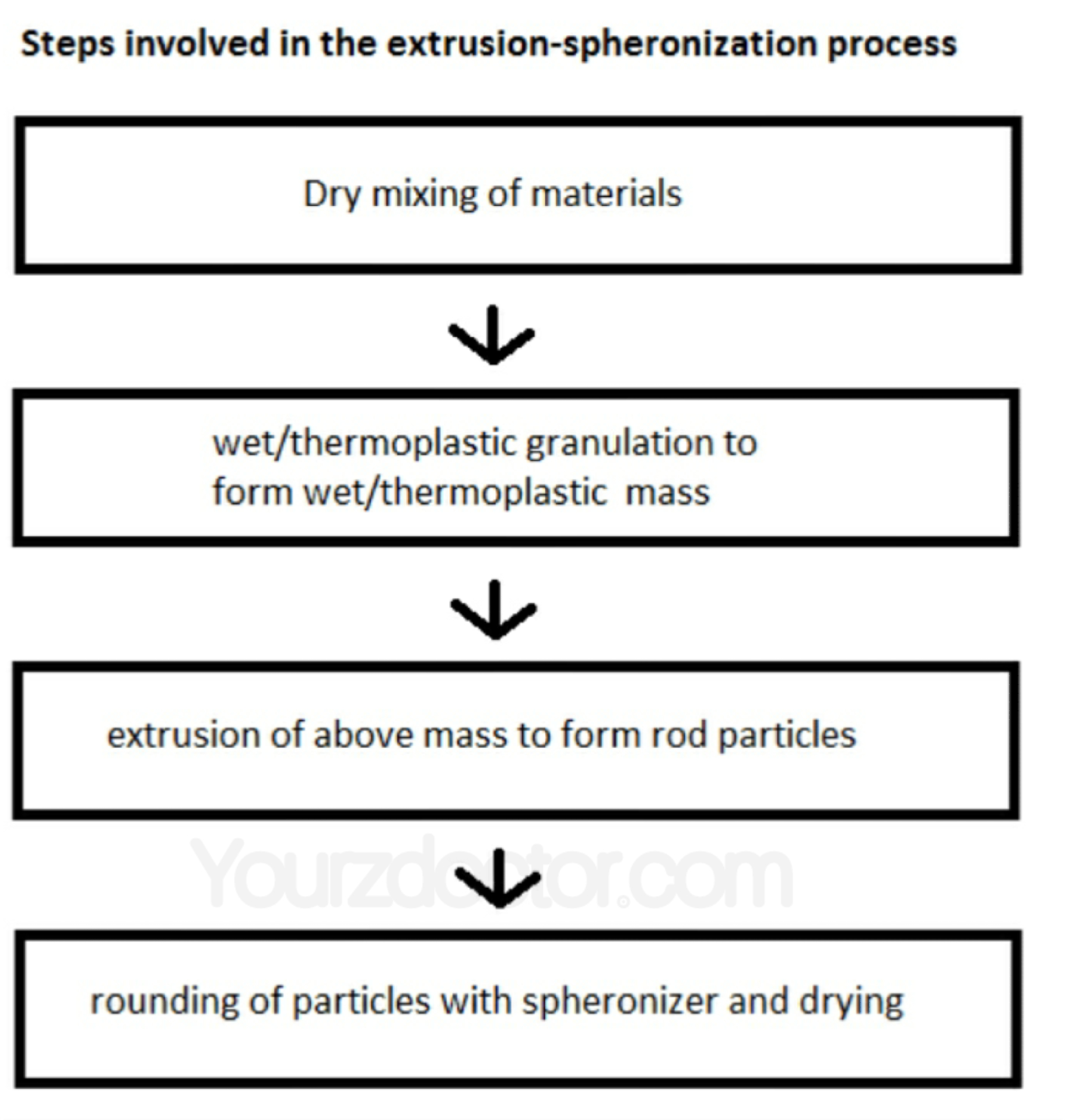Thermoplastic granulation / Melt granulation:
In this process
moldable binders are used which acts as solids in room temperature but melts
down at temperature between 50°C to 80°C
and behaves as liquid binder, there is no drying phase. Dried granules are
simply achieved by cooling them down at room temperatures.
3 phases are included.
1. wetting and nucleation.
2. coalescence
3. Attrition and
Breakage
1. Wetting and Nucleation
In this step liquid medium comes in contact with powder medium and small agglomerates are formed. Mathiesen and Schafer proposed 2 methods of nucleation
A. Immersion which
includes deposition of solids onto molten binder.
B. Distribution
includes formation of nuclei when particals comes in contact with binder,
through collision method.
2.Coalescence
This stage has nuclei
that has residual liquid for fusion of other nuclei
3.Attritution – breakage:
It refferes to have
granulation fragmentation. It has greater effect on the resulting properties.
Meltable Binders:
- Must be solid at room temperature and melts between 40-80 °C.
- Must be physically and chemically stable at various ph and moisture.
- Its HLB ensures correct release of active ingredients.
- Safe applications in humans.
Foam Binder Granulation (FBG):
In this type of
granulation aqueous foams are used in place of liquids. It has various benefits
over other wet granulation techniques it requires less wetting agent i.e. foam,
water sensitive compounds can be processed, drying time is reduced, no plugging
problems, less binders are requires in case of CR and SR products.
Novel technologies:
Spray dry granulation:
It is a continuous
process in which dried product is obtained in a process in which binding
solution or suspention of active pharmaceutical ingredient with or without
addition of excipients is feeded to the dried system which is then automized
and dried out with the help of heated gas-stream and the product is
subsequently separated from the stream. After that agglomeration of particles
is achieved by spry of binding solution onto the powder bed in fluidized state
by passage of hot air followed by drying. This technique is used in the
preparation of dusting powders and dry syrups. It is continuous and cost
effective process and the operator is less prone to dusting problems. It also
have some disadvantages that the thermolabile products cannot be prepared. And
particle size variation can occur in
case of improper spray.
Freeze granulation:
This technique
results in free flowing, homogenous and spherical granules. Spraying of powder
containing suspension is involved into the liquid nitrogen, where the resultant
drops are frozen instantaneously to form granules which upon freeze dying
yields dry granules. This is used in production of granules for injectable
purposes. By this process density of the granules can be controlled. Metals and
non oxides can be treated well through this process. It yields solid granules
with no cavaties. The organic solvent which is used in this process can be
recycled. And cleaning of equipments is very easy. It also has some of
disadvantages over other techniques i.e. degradation of drug can be occurred
due to freezing temperatures.
Pneumatic Dry Granulation (PDG):
It is a novel
granulation method which involves semi-automatic or complete automatic
production of granules. This process was invented by Atacama labs of Finland.
Compact mass is produced by roller compaction and then introduced into new
designed fractionating device which separate granules and recycles the rejected
fraction. It involve modification of disintegration time, hardness of tablet
and drug loading. High drug loading is achieved it easily masked taste of the
API and the difficult APIs combinations can be treated well, excellent
flowabilty and compressibility characteristics can be achieved.
Extrusion-spheronization granulation process:
As the name indicates Extrusion is the process which is used to create objects with a
fixed cross-sectional profile. The material is passed through a die of desired cross section. Spheronization is
a process in which extrudates are shaped into the small spherical or rounded
granules. This process is used to make uniform particles which are very much
suitable for the manufacturing of controlled release or modified formulations.
Tacky mass is passed through extruder and pellets are formed by apply hot melt
or wet extrusion techniques. The parameters like pore size of extruder, speed
of spheronization and operational conditions should be controlled which can
influence the size of particles and granuler morphology. This technique is used
in the manufacturing of capsules, dry suspensions, tablets and dry powders. It
cannot be used for thermolabile and moisture sensitive materials.
For types of granulation technology click here
Learn more
Searching Tags
Novel granulation
technologies
Top 5 novel
granulation technologies
What is Thermoplastic granulation ?
What is Melt granulation?
Phases of melt granulation
Top 3 phases of wet granulation
What is Wetting ?
What is Nucleation ?
What is Coalescence?
What is Attritution ?
What is breakage in wet granulation?
What is Meltable Binders?
What is Foam Binder Granulation? What is FBG?
What is advance granulation technologies?
What is novel granulation technologies?
What is Spray dry granulation?
What is Freeze granulation?
What is Pneumatic Dry granulation? What is PDG?
What is Extrusion-spheronization granulation process?
How Extrusion-spheronization granulation process is performed?










0 Comments